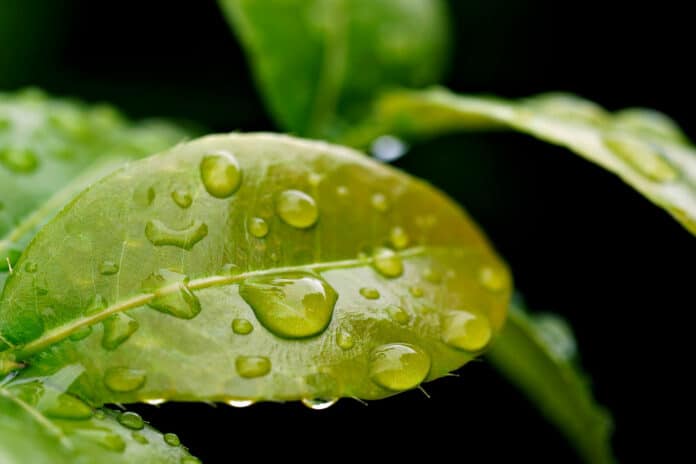Soft (bio)hybrid robotics aims at interfacing living beings with artificial technology. It was recently demonstrated that plant leaves coupled with artificial leaves of selected materials and tailored mechanics could convert wind-driven leaf fluttering into electricity.
Now, a team of researchers at the Italian Institute of Technology (IIT) in Genova has developed an energy-harvesting system that can be embedded within plants and creates electricity from raindrops or wind. The device functions well under rainy or windy conditions and can create enough electricity to light up LED lights and power itself.
Researchers say the system could have potential applications in agriculture and remote environmental monitoring to observe plant health or monitor climate conditions.
For the device to work properly, it is added to the leaves of a real plant. The device involves an artificial leaf that has a silicon elastomer layer along the bottom to generate and harvest static charges from the rustling of the leaves. The artificial leaf has a different fluorinated ethylene propylene (FEP) layer on its top side.
“When the [leaves] move in the wind, the two surfaces touch each other and separate again, creating static charges on the plant leaf cuticle and on our device,” explains Fabian Meder, a researcher studying bioinspired soft robotics at the Italian Institute of Technology (IIT). “These charges are induced into the inner cellular tissue of the plant, where they create a current. We can harvest this current by an electrode inserted into the plant tissue.”
To test their energy-harvesting device, the researchers embedded the artificial leaf system within the leaves of a living oleander plant and evaluated its ability to produce energy. The results showed that single water drops create voltage and current peaks of over 40 volts and 15 microamperes and can directly power 11 LED lights. The same structure has the additional capability to harvest wind energy using leaf oscillations.
“The results revealed that wind and rain energy harvesting are possible with the device – either separately or simultaneously – making it a multifunctional energy harvester or self-powered sensor,” says Barbara Mazzolai, associate director for robotics and director of the IIT’s Bioinspired Soft Robotics Laboratory, who was also involved in the study.
Researchers say the new device can create more electricity – than existing energy-harvesting systems like this that rely on wind energy alone – in wet conditions.
The team is now working on further improving the performance of their artificial leaf through design modifications, such as the shapes of the electrodes and the materials.
“We have filed a patent application on the technology and are analyzing the potential markets,” Mazzolai told IEEE Spectrum. “Still, some research is necessary before defining the final product – for example, we want to test the systems in detail under outdoor and strongly varying wind and rain conditions.”
Journal reference:
- Serena Armiento, Fabian Meder, and Barbara Mazzolai. Device for Simultaneous Wind and Raindrop Energy Harvesting Operating on the Surface of Plant Leaves. IEEE Robotics and Automation Letters, 2023; DOI: 10.1109/LRA.2023.3250006
